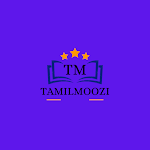India experienced an early development of cultures and civilisations. Since the Old Stone Age, several groups in India had migrated multiple times and made cultural adaptations to diverse eco-zones. Each group evolved its own culture responding to their living experiences in each place, which eventually led to pluralistic beliefs and systems. From a life of foraging through nomadic pastoralism, the settlers in Indus region reached a matured stage of living
in the Bronze Age.This chapter focuses on the history of India from the first settlement of humans in the Stone Age, up to the decline of the Indus Civilisation.It dwells on the Neolithic cultures as well.
Archaeological sources form the bedrock of information for us to understand this long span of time in Indian history. They include
archaeological sites, geological sediments,animal bones and fossils, stone tools, bone tools, rock paintings and artefacts. There is no written evidence for this period. Although the Harappans used a script, it is yet to be deciphered.The faunal (animal) and floral (plant)
sources are important for understanding the relationship of the Stone Age people with their environment. Floral evidence found in the form
of charred seeds, pollens and phytoliths (plantstones) helps us to gain knowledge of farming practiced by Stone Age people.The human genes also constitute an important source for understanding pre-
historic migrations. The mitochondrial DNA(mt-DNA) studies provide information on pre-historic migrations. Scientists are trying to extract ancient DNA from the bones of the pre-historic era to understand human dispersals.Language is another important source of history. Indo-Aryan, Dravidian, Austro-Asiatic and Tibeto-Burman language families have flourished in India. These languages developed and evolved during the various phases of migrations in Indian history.
The period before the development of script is called the pre-historic times. It is also referred to as the Stone Age. When we talk about
the Stone Age, we include the entire South Asia, the region covering India, Pakistan, Sri Lanka,Nepal and Bangladesh, as a whole.
Human ancestors are likely to have first evolved in Africa and later migrated to different parts of the world. The earliest human ancestor
species to migrate out of Africa was the Homo erectus. Till the end of the 20 th century,the pre-history of India was considered to have begun within the time span of one million years ago. But, recent investigations have produced evidence for the presence of human ancestors in India between two million and one million years ago.
Generally, the period before the invention of script is broadly divided into Stone Age,Bronze Age and Iron Age. Hence, the names of
materials that they used (for example, painted grey ware culture or Iron Age culture) or the geographical region (Indus) or the first site
to be identified (for example, Acheulian or Harappan) are used to name the cultures.
NMMS 2025 QP & Answer
Keywords







0 கருத்துகள்